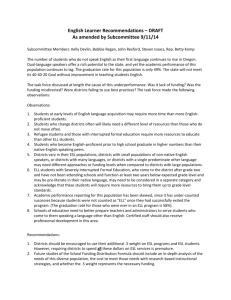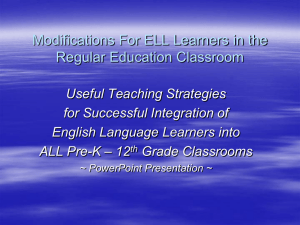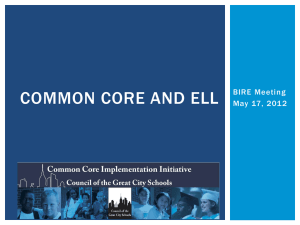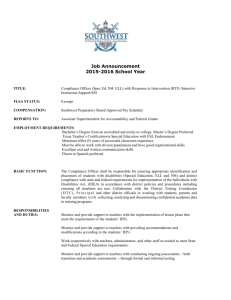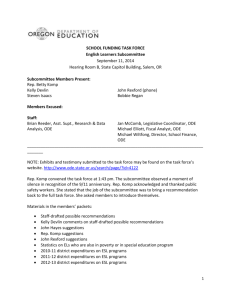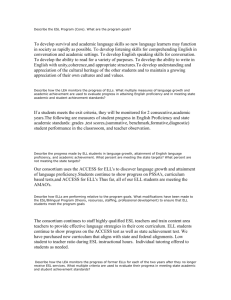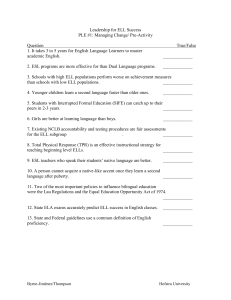English Learner Recommendations DRAFT
advertisement
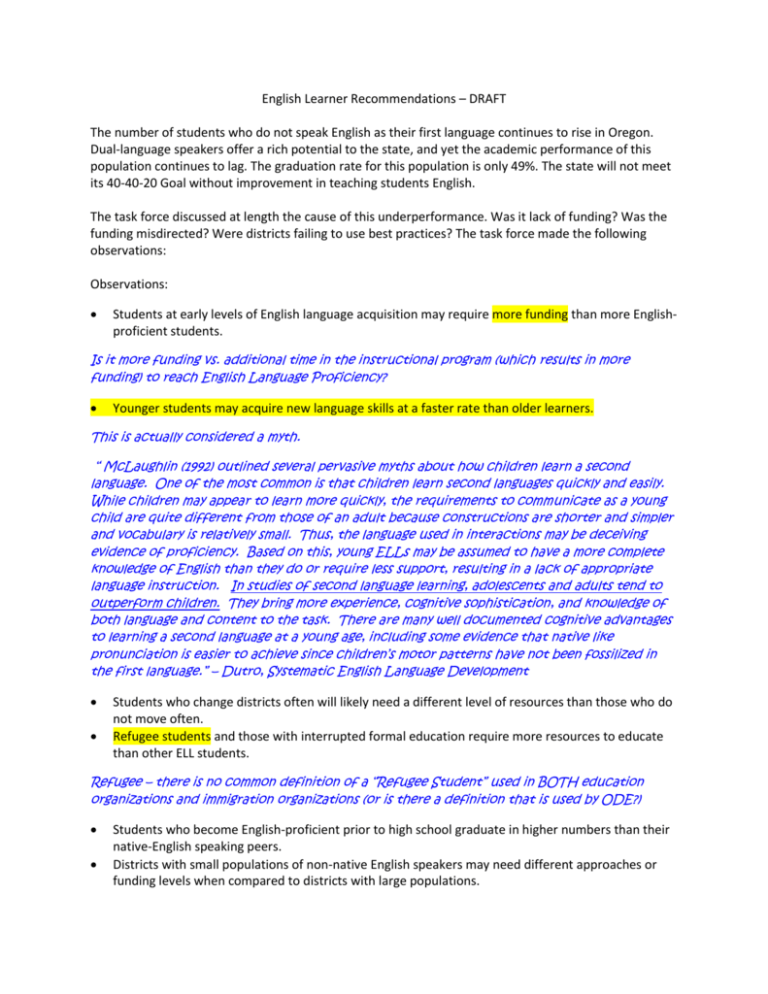
English Learner Recommendations – DRAFT The number of students who do not speak English as their first language continues to rise in Oregon. Dual-language speakers offer a rich potential to the state, and yet the academic performance of this population continues to lag. The graduation rate for this population is only 49%. The state will not meet its 40-40-20 Goal without improvement in teaching students English. The task force discussed at length the cause of this underperformance. Was it lack of funding? Was the funding misdirected? Were districts failing to use best practices? The task force made the following observations: Observations: Students at early levels of English language acquisition may require more funding than more Englishproficient students. Is it more funding vs. additional time in the instructional program (which results in more funding) to reach English Language Proficiency? Younger students may acquire new language skills at a faster rate than older learners. This is actually considered a myth. “ McLaughlin (1992) outlined several pervasive myths about how children learn a second language. One of the most common is that children learn second languages quickly and easily. While children may appear to learn more quickly, the requirements to communicate as a young child are quite different from those of an adult because constructions are shorter and simpler and vocabulary is relatively small. Thus, the language used in interactions may be deceiving evidence of proficiency. Based on this, young ELLs may be assumed to have a more complete knowledge of English than they do or require less support, resulting in a lack of appropriate language instruction. In studies of second language learning, adolescents and adults tend to outperform children. They bring more experience, cognitive sophistication, and knowledge of both language and content to the task. There are many well documented cognitive advantages to learning a second language at a young age, including some evidence that native like pronunciation is easier to achieve since children’s motor patterns have not been fossilized in the first language.” – Dutro, Systematic English Language Development Students who change districts often will likely need a different level of resources than those who do not move often. Refugee students and those with interrupted formal education require more resources to educate than other ELL students. Refugee – there is no common definition of a “Refugee Student” used in BOTH education organizations and immigration organizations (or is there a definition that is used by ODE?) Students who become English-proficient prior to high school graduate in higher numbers than their native-English speaking peers. Districts with small populations of non-native English speakers may need different approaches or funding levels when compared to districts with large populations. Academic performance reporting for this population has been skewed, since it has under-counted successes because students were not counted as “ELL” once they had successfully exited the program. (The graduation rate for those who were ever in an ELL program is 58%). Recommendations: Districts should be encouraged to use their additional .5 weight on ESL programs and ESL students. However, requiring districts to spend these dollars on ESL services is premature. Future studies of the School Funding Distribution Formula should include an in-depth analysis of the needs of this diverse population, the cost to meet those needs, and whether the .5 weight represents the necessary funding. Any changes in the ESL formula should be evaluated with respect to the change’s effect on other student populations. If a weighting change is proposed in the future, the subcommittee recommends that additional money be added to the State School Fund to avoid resource shifting and helping one group of students at the expense of another. Summer school offers a good opportunity for ESL students to gain skills and maintain their academic performance and should be part of any ESL discussion. I have concerns about Summer School being a recommendation – I think we should stick to recommendation regarding the CORE ELD Programs a district offers. Summer School is usually considered a supplemental program. Poverty is an intrinsic factor in this population; no ESL program will be entirely successful without addressing issues that arise due to poverty For the above bullet highlighted in turquoise … Would it be possible to gather data points? First Bullet – What is the current actual spending levels for each district in ESL? Is it possible to find the data for the past 3 years? I believe this is located in 1291 budget code key. Would we be able to cross reference the total 0.5 weighted funding a district received and then how much was budgeted /spent by the district in their 1291 category. Last Bullet – Is there a way to find out how many students are dual identified as: ELL and Poverty? ELL, SPED and Poverty? by district.

